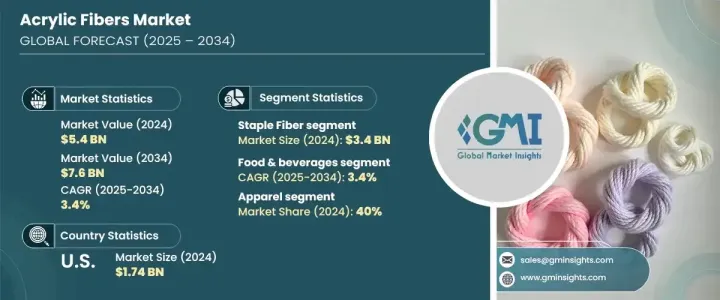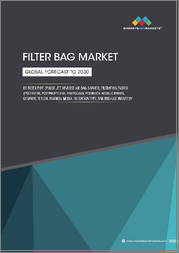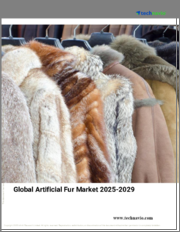
|
시장보고서
상품코드
1684767
세계의 아크릴 섬유 시장 : 기회, 성장 촉진요인, 산업 동향 분석, 예측(2025-2034년)Acrylic Fibers Market Opportunity, Growth Drivers, Industry Trend Analysis, and Forecast 2025 - 2034 |
||||||
세계의 아크릴 섬유 시장은 2024년 54억 달러에 달했으며, 2025년부터 2034년까지 연평균 복합 성장률(CAGR) 3.4%로 성장할 것으로 예상됩니다.
아크릴 섬유는 스웨터, 양말, 스포츠웨어 등 다양한 의류 제품의 제조에 널리 사용됩니다. 시장 성장의 큰 원동력이 되고 있는 것은 합성 섬유에 대한 소비자의 기호의 변화나 현대적인 패션 동향에 대응해 경량이며 내구성이 있어, 비용 효율적인 소재에 대한 수요의 상승입니다. 아크릴 섬유는 스타일과 기능성을 모두 제공하는 다목적성으로 특히 뒷받침됩니다. 패션 동향이 진화함에 따라 아크릴 섬유는 광범위한 용도와 마모 및 찢어짐에 대한 내성과 유지 보수의 용이성 등의 이점으로 인해지지를 모으고 있습니다. 섬유 산업에서 합성 소재에 대한 경사 증가는 소비자가 품질에 타협하지 않고 저렴한 가격으로 지속 가능한 선택을 요구하기 때문에 시장을 더욱 밀어 올립니다.

섬유 유형별로 시장을 세분화하면 크게 2가지로 분류됩니다. 토우(토우 염색) 섬유와 스테이플 섬유입니다. 2024년에는 스테이플 섬유가 주도권을 잡고 34억 달러의 수익을 올렸습니다. 스테이플 섬유는 담요, 카펫, 스웨터 등의 섬유 제품에 널리 사용되어 범용성과 비용 효율성을 보여줍니다. 이 섬유는 부드러움, 내구성, 장기간의 형태 유지 능력으로 뛰어나며 패션 산업과 가정용 섬유 산업 모두에 이상적인 선택입니다. 스테이플 섬유의 인기는 계절적인 수요와 다양한 소비자 요구에 부응하는 편안하고 유지 보수가 적은 직물에 대한 선호도가 높아짐에 따라 뒷받침되고 있습니다.
| 시장 범위 | |
|---|---|
| 시작 연도 | 2024년 |
| 예측 연도 | 2025-2034년 |
| 시작 금액 | 54억 달러 |
| 예측 금액 | 76억 달러 |
| CAGR | 3.4% |
최종 용도별로 아크릴 섬유 시장은 여과 및 분리, 섬유, 자동차, 건설, 항공우주 및 방위, 헬스케어 및 기타 주요 분야로 나뉩니다. 그 중에서도 섬유 산업이 최대의 점유율을 차지하고 있습니다. 2024년에는 합리적인 가격으로 고품질의 의류에 대한 소비자 수요가 증가함에 따라 섬유 분야가 계속 번창하고 있습니다. 아크릴 섬유의 다양한 스타일에 대한 적응성과 패션 동향의 변화에 대응하는 능력은 세계의 섬유 시장에서의 지위를 확고하게 하고 있습니다.
미국에서만 아크릴 섬유 시장은 2024년에 17억 4,000만 달러를 차지했습니다. 미국 시장의 성장 촉진요인은 자동차 인테리어에 아크릴 섬유의 채택이 증가하고 있다는 것입니다. 미적 감각이 뛰어나 쾌적한 차량 디자인이 중시되게 되어, 제조업체는 인테리어 체험을 향상시키기 위해 아크릴 섬유에 주목하고 있습니다. 인테리어 디자인의 새로운 동향과 고품질 소재에 대한 기호 고조가, 이 분야를 향후 수년에 한층 더 밀어올릴 것으로 예상됩니다.
아크릴 섬유 시장은 다양한 산업 분야에서 광범위한 용도로 지원되고 안정적인 성장을 이루고 있습니다. 소비자는 가볍고 내구성이 뛰어나고, 유지보수가 용이한 제품을 계속 요구하고, 패션에서 자동차에 이르는 산업이 아크릴 섬유에 계속 의존하고 있기 때문에 시장 상승 기조는 2034년까지 지속될 것으로 예상됩니다.
목차
제1장 조사 방법과 조사 범위
- 시장 범위와 정의
- 기본 추정과 계산
- 예측 계산
- 데이터 소스
- 1차 데이터
- 2차 데이터
- 유료 정보원
- 공적 정보원
제2장 주요 요약
제3장 업계 인사이트
- 생태계 분석
- 밸류체인에 영향을 주는 요인
- 이익률 분석
- 파괴
- 미래의 전망
- 제조업체
- 유통업체
- 공급자의 상황
- 이익률 분석
- 주요 뉴스
- 규제 상황
- 영향요인
- 성장 촉진요인
- 섬유 산업의 성장
- 성장하는 자동차 산업
- 성장하는 건설 업계
- 업계의 잠재적 위험 및 과제
- 다른 합성 섬유와의 경쟁
- 원료 가격의 변동
- 환경에 대한 우려
- 성장 촉진요인
- 성장 가능성 분석
- Porter's Five Forces 분석
- PESTEL 분석
제4장 경쟁 구도
- 소개
- 기업 점유율 분석
- 경쟁 포지셔닝 매트릭스
- 전략 전망 매트릭스
제5장 시장 규모와 예측 : 섬유 유형별, 2021-2034년
- 주요 동향
- 스테이플 섬유
- 토우(토우 염색) 섬유
제6장 시장 규모와 예측 : 용도별, 2021-2034년
- 주요 동향
- 의류
- 가정용 섬유
- 부직포
- 공업 및 기술용 섬유
- 카펫 및 러그
- 아웃도어 및 레저 용품
- 업홀스터리
- 담요 및 침구
- 공예 및 취미
- 기타
제7장 시장 규모와 예측 : 용도별, 2021-2034년
- 주요 동향
- 섬유산업
- 자동차산업
- 건설산업
- 여과 및 분리
- 항공우주 및 방위산업
- 헬스케어 산업
- 기타
제8장 시장 규모와 예측 : 지역별, 2021-2034년
- 주요 동향
- 북미
- 미국
- 캐나다
- 유럽
- 영국
- 독일
- 프랑스
- 이탈리아
- 스페인
- 러시아
- 아시아태평양
- 중국
- 인도
- 일본
- 한국
- 호주
- 라틴아메리카
- 브라질
- 멕시코
- 중동 및 아프리카
- 남아프리카
- 사우디아라비아
- 아랍에미리트(UAE)
제9장 기업 프로파일
- International Paper
- ITC
- Mondi
- Nippon Paper Industries
- Oji Holding Corporation
- Smurfit Kappa
- South African Pulp & Paper Industries
- Stora Enso
- Svenska Cellulosa Aktiebolaget
The Global Acrylic Fibers Market is expected to reach USD 5.4 billion in 2024 and is projected to grow at a CAGR of 3.4% between 2025 and 2034. Acrylic fibers are widely utilized in the manufacturing of various apparel items, such as sweaters, socks, and sportswear. The market growth is largely driven by the increasing demand for lightweight, durable, and cost-effective materials that cater to evolving consumer preferences for synthetic fabrics and modern fashion trends. Acrylic fibers are particularly favored for their versatility, offering both style and functionality. As fashion trends evolve, these fibers continue to gain traction due to their wide application and benefits, including their resistance to wear and tear and ease of maintenance. The growing inclination toward synthetic materials in the textile industry further boosts the market as consumers look for affordable and sustainable options without compromising on quality.

Segmenting the market by fiber type reveals two major categories: Tow (Tow-Dyed) Fiber and Staple Fiber. In 2024, Staple Fiber took the lead, generating USD 3.4 billion in revenue. Staple fibers are widely used in textiles such as blankets, carpets, and sweaters, showcasing their versatility and cost-effectiveness. These fibers are prized for their softness, durability, and ability to maintain shape over time, making them an ideal choice for both fashion and home textile industries. The popularity of staple fibers is also fueled by seasonal demands and a growing preference for comfortable, low-maintenance fabrics that cater to a variety of consumer needs.
| Market Scope | |
|---|---|
| Start Year | 2024 |
| Forecast Year | 2025-2034 |
| Start Value | $5.4 Billion |
| Forecast Value | $7.6 Billion |
| CAGR | 3.4% |
In terms of end-use, the acrylic fibers market is divided into several key sectors: filtration and separation, textiles, automotive, construction, aerospace and defense, healthcare, and others. Among these, the textile industry holds the largest share. In 2024, the textile segment continued to thrive due to increasing consumer demand for affordable, high-quality clothing. Acrylic fibers' adaptability to various styles and ability to cater to changing fashion trends solidify their position in the global textile market.
In the U.S. alone, the acrylic fibers market generated USD 1.74 billion in 2024. A significant driver of growth within the U.S. market is the rising adoption of acrylic fibers in automotive interiors. With a growing emphasis on aesthetically pleasing and comfortable vehicle designs, manufacturers are turning to acrylic fibers to enhance the interior experience. Emerging trends in interior design and an increasing preference for high-quality materials are expected to propel this segment even further in the coming years.
The acrylic fibers market is set for steady growth, supported by its broad range of applications across diverse industries. As consumers continue to seek lightweight, durable, and easy-to-maintain products, and industries from fashion to automotive keep relying on acrylic fibers, the market's upward trajectory is expected to be sustained through 2034.
Table of Contents
Chapter 1 Methodology & Scope
- 1.1 Market scope & definition
- 1.2 Base estimates & calculations
- 1.3 Forecast calculation
- 1.4 Data sources
- 1.4.1 Primary
- 1.4.2 Secondary
- 1.4.2.1 Paid sources
- 1.4.2.2 Public sources
Chapter 2 Executive Summary
- 2.1 Industry synopsis, 2021-2034
Chapter 3 Industry Insights
- 3.1 Industry ecosystem analysis
- 3.1.1 Factor affecting the value chain
- 3.1.2 Profit margin analysis
- 3.1.3 Disruptions
- 3.1.4 Future outlook
- 3.1.5 Manufacturers
- 3.1.6 Distributors
- 3.2 Supplier landscape
- 3.3 Profit margin analysis
- 3.4 Key news & initiatives
- 3.5 Regulatory landscape
- 3.6 Impact forces
- 3.6.1 Growth drivers
- 3.6.1.1 Growing textile industry
- 3.6.1.2 Growing automotive industry
- 3.6.1.3 Growing construction industry
- 3.6.2 Industry pitfalls & challenges
- 3.6.2.1 Competition from Other Synthetic Fibers
- 3.6.2.2 Fluctuating Raw Material Prices
- 3.6.2.3 Environmental Concerns
- 3.6.1 Growth drivers
- 3.7 Growth potential analysis
- 3.8 Porter’s analysis
- 3.9 PESTEL analysis
Chapter 4 Competitive Landscape, 2024
- 4.1 Introduction
- 4.2 Company market share analysis
- 4.3 Competitive positioning matrix
- 4.4 Strategic outlook matrix
Chapter 5 Market Size and Forecast, By Fiber Type, 2021-2034 (USD Billion) (Kilo Tons)
- 5.1 Key trends
- 5.2 Staple fiber
- 5.3 Tow (Tow-Dyed) fiber
Chapter 6 Market Size and Forecast, By Application, 2021-2034 (USD Billion) (Kilo Tons)
- 6.1 Key trends
- 6.2 Apparel
- 6.3 Home textiles
- 6.4 Nonwoven fabrics
- 6.5 Industrial and technical textiles
- 6.6 Carpets and rugs
- 6.7 Outdoor and recreational products
- 6.8 Upholstery
- 6.9 Blankets and bedding
- 6.10 Craft and hobby
- 6.11 Others
Chapter 7 Market Size and Forecast, By End-Use, 2021-2034 (USD Billion) (Kilo Tons)
- 7.1 Key trends
- 7.2 Textile industry
- 7.3 Automotive industry
- 7.4 Construction industry
- 7.5 Filtration and separation
- 7.6 Aerospace and defense
- 7.7 Healthcare industry
- 7.8 Others
Chapter 8 Market Size and Forecast, By Region, 2021-2034 (USD Billion) (Kilo Tons)
- 8.1 Key trends
- 8.2 North America
- 8.2.1 U.S.
- 8.2.2 Canada
- 8.3 Europe
- 8.3.1 UK
- 8.3.2 Germany
- 8.3.3 France
- 8.3.4 Italy
- 8.3.5 Spain
- 8.3.6 Russia
- 8.4 Asia Pacific
- 8.4.1 China
- 8.4.2 India
- 8.4.3 Japan
- 8.4.4 South Korea
- 8.4.5 Australia
- 8.5 Latin America
- 8.5.1 Brazil
- 8.5.2 Mexico
- 8.6 MEA
- 8.6.1 South Africa
- 8.6.2 Saudi Arabia
- 8.6.3 UAE
Chapter 9 Company Profiles
- 9.1 International Paper
- 9.2 ITC
- 9.3 Mondi
- 9.4 Nippon Paper Industries
- 9.5 Oji Holding Corporation
- 9.6 Smurfit Kappa
- 9.7 South African Pulp & Paper Industries
- 9.8 Stora Enso
- 9.9 Svenska Cellulosa Aktiebolaget



















